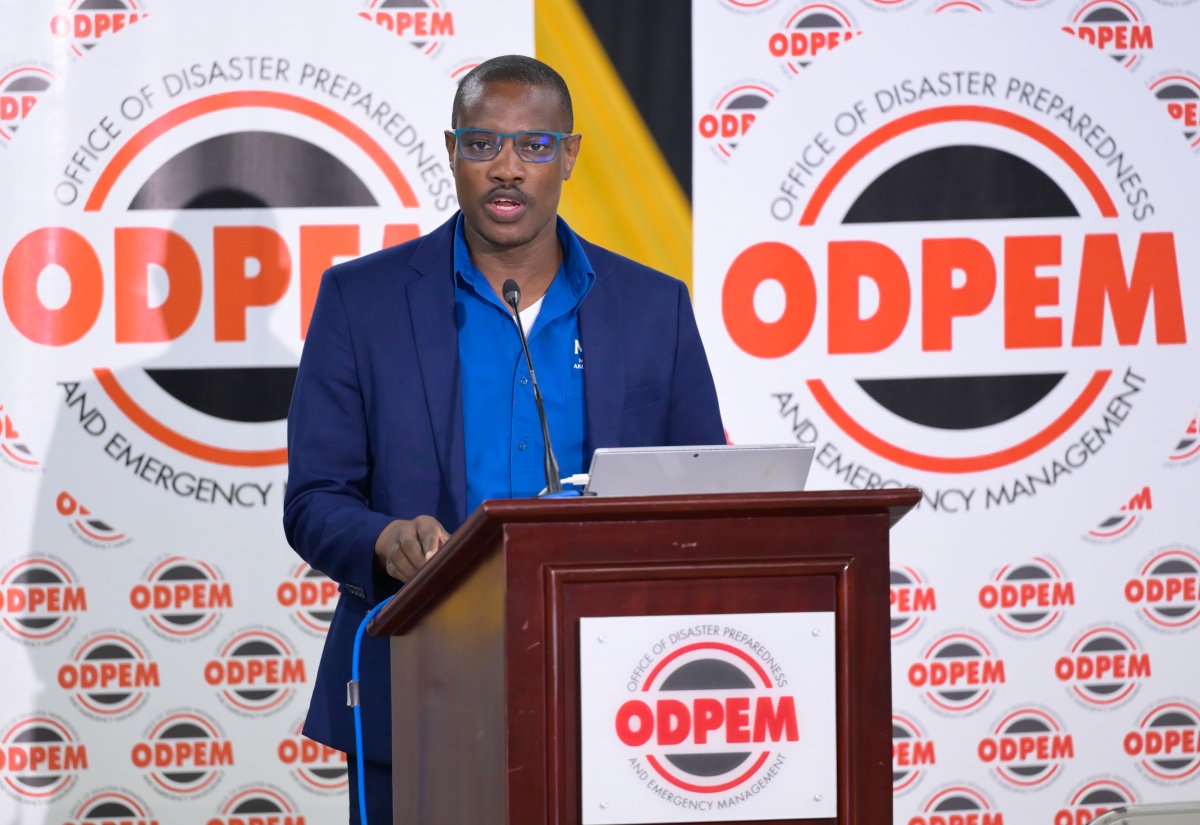Gov’t Looking to Develop Additional Disaster Risk Financing Instrument for Jamaica
By: , October 28, 2024The Full Story
Chief Fiscal Economist in the Ministry of Finance and the Public Service, Terron Francis, says the Government is holding talks with the World Bank regarding the development of another disaster risk financing instrument for Jamaica.
This, he points out, is to aid in mitigating the impact of natural disasters on the national budget.
“We are currently in discussion with the World Bank in developing a Catastrophe Differed Drawdown Option (Cat DDO) where, in the event of a natural disaster, we could actually draw down on these funds,” Mr. Francis said.
He was outlining the multilayered approach to disaster risk financing being undertaken by the Government, while addressing a townhall on Jamaica’s Comprehensive Disaster Risk Management Policy at the Girl Guides Association of Jamaica headquarters in St. Andrew on Thursday (October 24).
Mr. Francis noted that Jamaica also has a contingency facility with the Inter-American Development Bank (IDB), “that allows us to drawdown in excess of US$300 million.”
“Now the Contingency Fund and the CAT DDO, these are instruments that we will draw down on as a matter of last resort for the very reason that, when you draw down on these contingent credit facilities it actually increases the public debt of the Central Government.
“So we are having in place these instruments to ensure that… we have made ex ante preparations to ensure that adequate resources are available to finance natural disasters when they do occur, so that we can preserve the gains that we would have made over the years from the many sacrifices that all Jamaicans would have made,” he said.
Mr. Francis noted that in 2023, a National Natural Disaster Risk Financing Policy was tabled in Parliament by the Finance Ministry.
He said the policy promotes a layered approach to disaster risk financing, “whereby we ensure that there are adequate reserves to deal with losses associated with high-frequency, low-severity events… natural disasters… while transferring the risks related to more low frequency, high severity events.
“What we have done is have a multilayered approach, because one layer cannot deal with all the hazards to which we are exposed. So for some of the hazards, we have decided that we will retain the risks. Some of the instruments we have in place to retain the risks associated with more high-frequency, low-severity events are our Contingency Fund, that was capitalised at about $5 billion at the beginning of the 2024/25 financial year,” the Economist stated.
He explained that with the passage of Hurricane Beryl, funds would have been advanced from the Contingency Fund to the various ministries, departments and agencies to undertake the response effort.
Additionally, he said there is a Natural Disaster Fund in place which is overseen by the Office of Disaster Preparedness and Emergency Management (ODPEM).
“We have, as well, established a National Natural Disaster Reserve Fund, which, in the 2024/25 Budget, we have allocated $1 billion to capitalise. But it will also be a repository for all the payouts that would emanate from the various risk transfer instruments that we have in place whenever the policies are triggered,” Mr. Francis stated.
He added that, “in terms of the risk transfer instruments, we currently have a Catastrophe Bond that allows a drawdown of up to US$150 million”.
“The catastrophe bond addresses the impact of named storms that meet the specific parameters in relation to the CAT Bond,” he said.
Mr. Francis further highlighted insurance instruments under the Caribbean Catastrophe Risk Insurance Facility with the Segregated Portfolio Company.
“We actually have three policies – we have the excess rainfall policy, the tropical cyclone policy and we have an earthquake policy. With the passage of Hurricane Beryl, the policies for excess rainfall and tropical cyclone would have been triggered, and Jamaica was able to benefit from $4.2 billion that would have been used to offset expenses related to the response and recovery efforts,” the Economist said.
“This is one instance where we see the benefits of having in place these disaster risk financing instruments to help to mitigate the impact of natural disasters on the national Budget. Had it not been for these instruments… the Government would have had to resort to additional borrowing or… reallocating resources that would have been targeted for some critical expenditure,” Mr. Francis emphasised.
The development and promulgation of the Policy will enable disaster risk management to be streamlined in development planning across all sectors as well as facilitate the effective coordination of disaster risk management programmes towards a resilient Jamaica.


